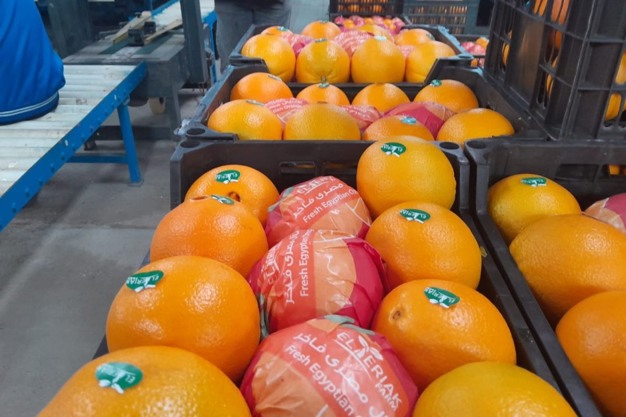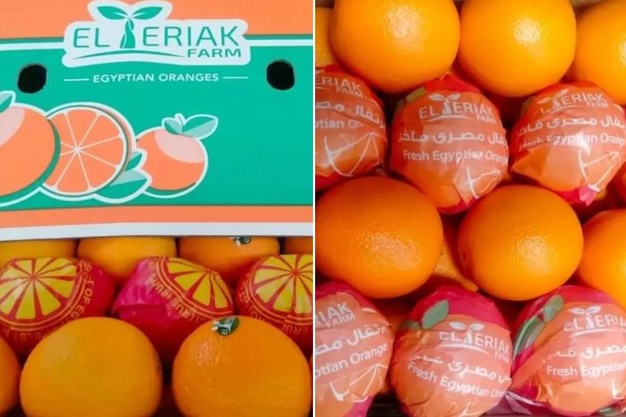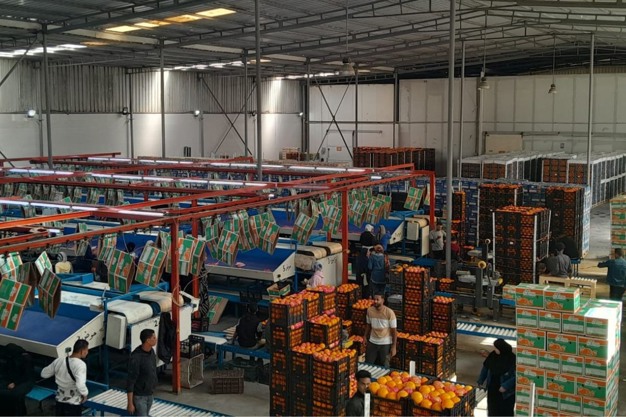The Egyptian Valencia orange campaign is drawing to a premature close. This year's campaign is marked by a sharp rise in prices. Reminiscent of the 2022/2023 season, this campaign is influenced by the shortage of large calibers and logistical bottlenecks, leading to price fluctuations and market instability. Prices are also influenced by emerging factors that contribute to increased confusion in the industry.

Amgad Nessem, Export Manager of Al Teriak Farms, reports: "This season's prices are on average 20% higher than last season's. But behind this average, fluctuations are extreme. Prices vary from -20% to +20-25%, even 35% compared to last season, depending on the period and the market. Several factors come into play, making prices sometimes out of control."
The most influential driver of price instability, according to Nessem, is undoubtedly the shortage of large sizes. He explains that "90% of this season's Egyptian Valencia orange crop is made up of medium sizes, 72, 80, and 88. In markets that prefer these sizes, particularly in Eastern Europe, such as Poland, Slovenia, Ukraine, Croatia, and elsewhere, prices are 30-35% higher than last season."

"We remain competitive in markets that prefer medium sizes, such as Western Europe, where our prices have risen but are still lower than our competitors in Spain. Despite the abundance of medium sizes, the total harvest of Valencia oranges in Egypt has fallen by almost a third due to climatic factors, notably the heatwave recorded in Egypt at flowering time. Spain, our direct competitor, has experienced similar problems, which makes the price of our oranges competitive despite the general increase on last season," Nessem adds.
Price fluctuations are further influenced by the logistics factor, which lengthens the transit time to Europe, causing either a shortage or an abundance of oranges on the markets. Nessem explains: "Transit time to the Netherlands can reach up to 50 days, due to shipping delays caused by weather conditions. So there are price hikes when there are no oranges. Once the containers all arrive at the same time, prices on international European markets like Rotterdam plummet."
Other new factors come into play in setting prices for Egyptian oranges this season, such as the significant cut in export subsidies in Egypt, or the updating of European Union standards which reduces the number of Egyptian exporters competing in this market. Nessem comments, "These are parameters that count heavily in setting prices and are among the reasons for the increase in prices this season."

Finally, this season has seen the emergence of new players in the Egyptian citrus industry. Nessem: "As demand for orange juice increases in Egypt, more and more orange juice and concentrate factories are appearing in the country. These factories are in a constant race to guarantee as much fruit as possible. We are seeing farm-gate prices for orange gaps destined for these factories reaching almost the same level as exportable oranges."
Egypt's strength has long been founded on its competitive prices and climate, making it the world's leading citrus origin. Will Egyptian oranges remain competitive on the world market? "We don't know how long the market will accept price increases," replies Nessem. "For the moment, we're holding our own because Spain is charging even higher prices. But it all depends on the price the end consumer is willing to bear. After all, no Egyptian exporter can accept to sell at a loss, which currently means selling at USD 500 per tonne. I'm not exaggerating when I say that the entire citrus export industry is facing a difficult test".

This is a question for next season, as volumes of Valencia oranges from Egypt are already starting to run out, as Nessem concludes: "The season started earlier than usual, in January, with a third less in volumes due to climate disruptions. For the first time in a very long time, the campaign will not last until April."
For more information
Amgad Nessem
El Teriak Farms
Tel: +201 207 976 920
Email: amgad.nessem@elteriakfarms.com
www.elteriakfarms.com
